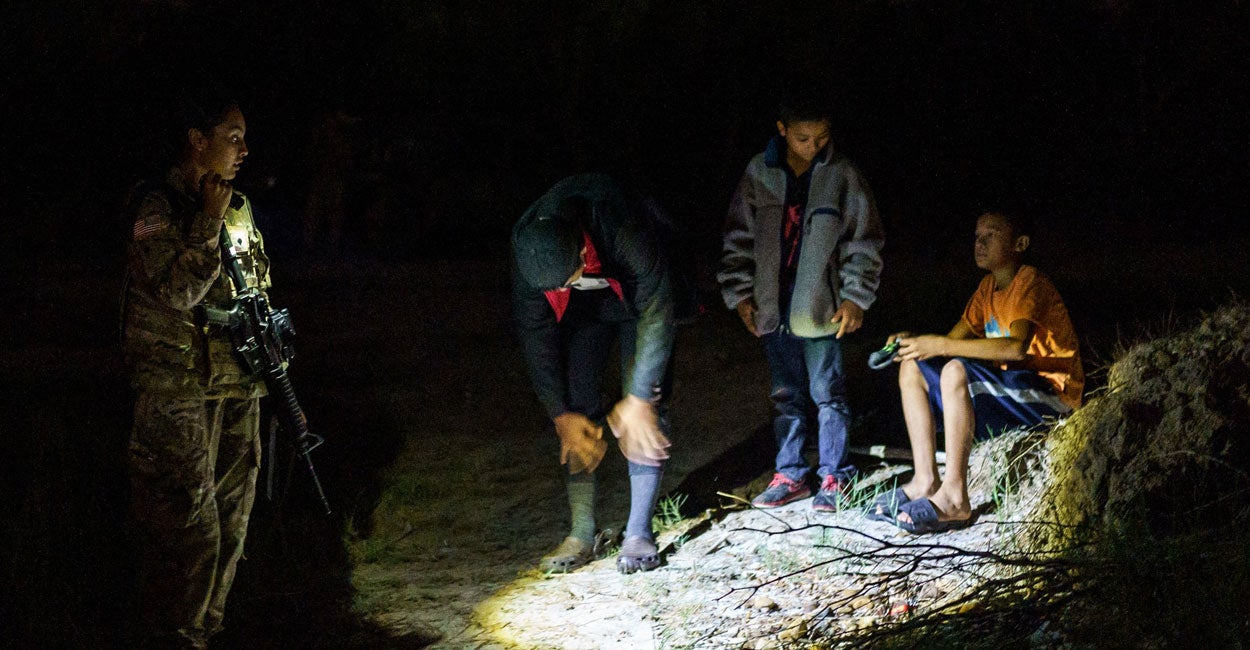


For four years, hundreds of thousands of minors arrived at the southern border without a parent or legal guardian. The whereabouts of many of those children remain unknown, but immigration authorities are working to confirm their status, the inspector general of the Department of Homeland Security says.
“Among the most vulnerable populations [the Department of Homeland Security] encounters are unaccompanied alien children, referred to as UACs,” Joseph Cuffari said Wednesday at a House Oversight Subcommittee on Federal Law Enforcement hearing, “Catch and Release, Lose and Forget: Addressing the Crisis of Unaccompanied Alien Children.”
Between fiscal years 2019 and 2023, more than 448,000 unaccompanied alien children were transferred from Immigration and Customs Enforcement custody to the custody of the Department of Health and Human Services, Cuffari told members of the committee. Most of those children were placed in the care of a sponsor.
A recent audit conducted by the inspector general’s office found “significant gaps in how ICE monitors and manages the cases of UACs once they’re released from federal custody,” Cuffari said, also noting that limited ICE staff coupled with a massive influx of illegal immigration contributed to the challenge of monitoring the status of unaccompanied minors.
Among the 448,000 minors to enter the U.S. in recent years, ICE failed to issue more than 233,000 notices to appear in immigration court, according to the inspector general. Furthermore, more than 43,000 migrant children who were given a notice to appear in immigration court failed to do so.
The inspector general’s audit found that 31,000 of the children released to a sponsor did not have a proper address where immigration officials could reach them.
Following the findings from Cuffari’s office, ICE has accepted recommendations on how to better safeguard unaccompanied alien children.
Under the leadership of DHS Secretary Kristi Noem, a team of ICE agents and DHS investigators was formed in February to “identify, locate, and provide health and welfare checks on unaccompanied alien children who had been transferred from DHS custody to HHS.”
Working with other federal law enforcement agencies, the ICE and DHS team has knocked on about 50,000 doors of sponsors who were listed as sponsoring two or more illegal-alien children.
“From what we understand, they were able to identify and physically locate 12,000 unaccompanied alien children,” Cuffari said, adding that “about 400” sponsors have been arrested following the home visits.
ICE weighs the risk an illegal alien poses to the U.S., but in the case of unaccompanied alien children, Cuffari says ICE must “also ensure a vulnerable child does not become the victim of trafficking or … exploitation.”
“The lack of reliable location data, persists in delays in issuing notices to appear, and limited interagency cooperation has led to potentially tens of thousands of children effectively disappearing from DHS’s oversight,” he said.
On average, 11,132 unaccompanied children were encountered at the southern border monthly under the Biden administration, according to the DHS.
Under U.S. law, children who arrive at the border without a parent or guardian are to be screened to determine if they are trafficking victims and then released into the custody of the HHS’s Office of Refugee Resettlement, which in turn releases the child to a sponsor in the U.S., making it much harder to find the children if they do not appear for their asylum hearing.
A sponsor can be a distant relative the child has never met—or not related at all.
According to the Office of Refugee Resettlement, a background check is run on all sponsors, and sponsors are required to ensure the child attends their immigration proceedings. The sponsor is also responsible for making sure the minor reports to ICE if they have been ordered removed.
